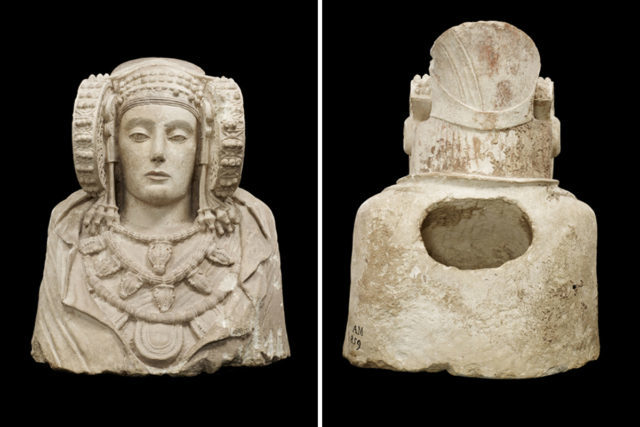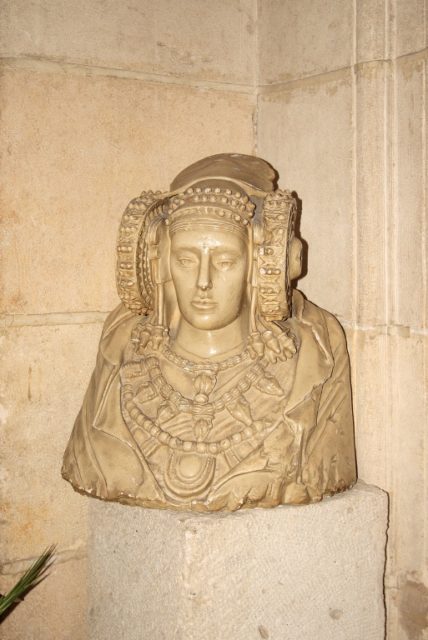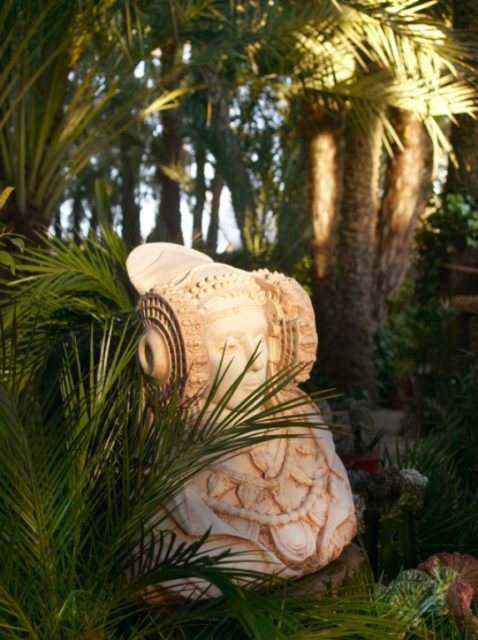Whether she was a funerary holder, a depiction of a goddess, or an Iberian princess, the Lady of Elche’s origin can never be known for sure. Nevertheless, it is widely believed to be one of the most striking examples of sculpture work found on the planet.
The mysterious artifact, a polychrome bust that depicts the head of a woman, was unearthed by chance in 1897. It was supposedly stumbled upon by a young farm worker who was clearing an area for planting on the L’Alcúdia estate in Elche, part of the Spanish province of Alicante in the country’s southeast.
The Lady of Elche looks stunning, to say the least. The sculpture depicts the head, neck, and shoulders, down to the chest, of a woman who appears to lack any particular expression or emotions on her face. One of the most elaborate elements is the headdress that adorns the woman’s head, which looks a bit reminiscent of Princess Leia of Star Wars.

Two big coils called rodetes are featured on the lady’s elaborate headdress, positioned on either side of her head, and tassel-like earrings hang down to the shoulders. A carved necklace further adorns her neck and chest. The origin of the bust is the subject of much debate. Some scholars argue that she is Iberian, others that she is carved in the image of a goddess of Carthage, called Tanit. This goddess is known to have ruled over the Moon, the Sun, and the other stars in the known universe, and ancients would invoke her for fertility.
Another theory is that the Lady of Elche represents a goddess of Atlantis, or maybe she was some sort of priestess. However, John F. Moffitt, an American art historian, argues that the artifact is just another art fabrication. He claims that the bust’s elements are too intricate detailed to have been produced during the pre-Christian era of Spain.

According to archaeologists, the Lady of Elche was produced around the 4th century BC, and the stone used suggests it was carved not very far from where it was found centuries later. When the bust was unearthed, traces of vivid colors such as red and blue were also noticed, meaning its ancient makers likely had it painted as well.
Shortly after the bust was discovered, the owner of the property sold it to a French archaeological connoisseur named Pierre Paris, after which the artifact ended up in the Louvre.
The artifact remained in Paris until the beginning of the 1940s, when it was returned to Spain in a time when France was undergoing a difficult period under Hitler’s Germany. Reportedly, the Lady of Elche sculpture was accepted in an exchange program that included several other pieces of artworks, negotiated with the government of Spain. As some historians had remarked, this has been an exchange which was not in favor of France.

In its native country, the Lady of Elche bust was initially displayed in Madrid’s Museo del Prado, after which, in 1971, the piece was relocated to its current home, in Madrid’s National Archaeological Museum. The mysterious artifact counts as one of the most valuable artifacts housed in this museum edifice.
In the late 1990s, city officials from Elche asked Madrid to return the bust to its original home. At that point, the city of Elche had planned for festivities, to mark two millennia since its founding, which was all the more reason why locals wished the original piece to be exhibited there. However, requests to bring the bust home have failed up to now.
At present, the original artifact continues to be protected in Madrid, and a replica of it has been produced and housed in the local Museum of Archaeology and History of Elche. The original bust was sent and displayed in Elche only once, back in 2006.
